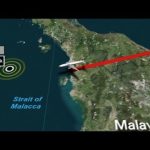Comet Trails: An IMEX project for predicting meteor storms at spacecraft or planets
Description_
The “IMEX Cometary trails” project is an ESA-funded project run at the IRS to characterise dust trails produced by comets in the inner solar system. We want to predict meteor showers at any position or time in the solar system: for example, can we predict meteor storms at spacecraft or at other planets?; can we understand how dust produced by comets disperses to form the interplanetary dust cloud?
Motivation:
Meteoroid environment modelling is crucial to providing hazard risk assessments for the design phase of spacecraft missions: meteoroid impacts can damage or destroy spacecraft or spacecraft
subsystems. Manned space activities are especially vulnerable to any damage caused by meteoroid impacts because of their much lower tolerance level, their large cross sections and their long
exposure times. Such models also provide an important scientific role by helping to defining the dust environment and the parent bodies of these grains. Existing dust environment models do not
include small-scale and time-dependent structures caused by streams and trails of recently released cometary material.
The IMEX contribution:
The Interplanetary Meteoroid Environment for eXploration (IMEX) project aims to close this gap, allowing for identification of the important cometary streams at any point in space and time. We
extend the application of meteoroid stream modelling at the Earth to ask whether we can determine `meteor showers’ that occur at spacecraft locations or at other planets or points of interest. This
improves both our understanding of the impact hazard to spacecraft, and our understanding of the formation and dispersion of cometary trails and streams.
Integrating dust trajectories with Constellation:
We have developed a simple model of emission of dust from comets. We now need to integrate the trajectories of these dust particles as they orbit the sun, in order to explicitly include the effect of planetary gravity (Jupiter is a major perturber). For each comet we have thousands of test particles which must be integrated for 200-400 years. This problem is therefore trivially parallelizable. Our first aim is to model meteor storms and outbursts at the Earth to validate the model for use in
predicting the meteoroid environment at other locations in the inner Solar System.
Leave A Reply
You must be logged in to post a comment.









 Paranormal
Paranormal

